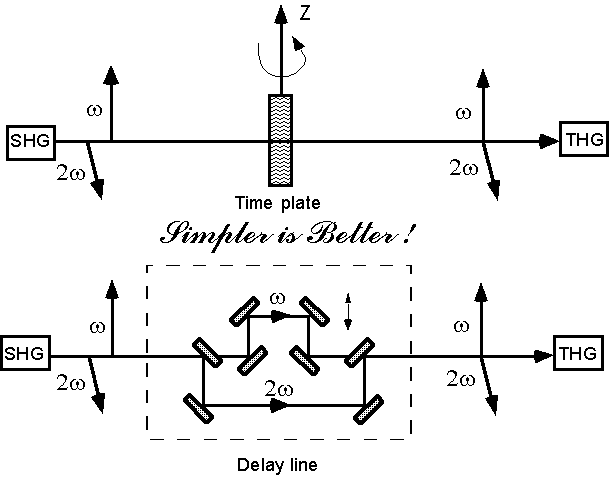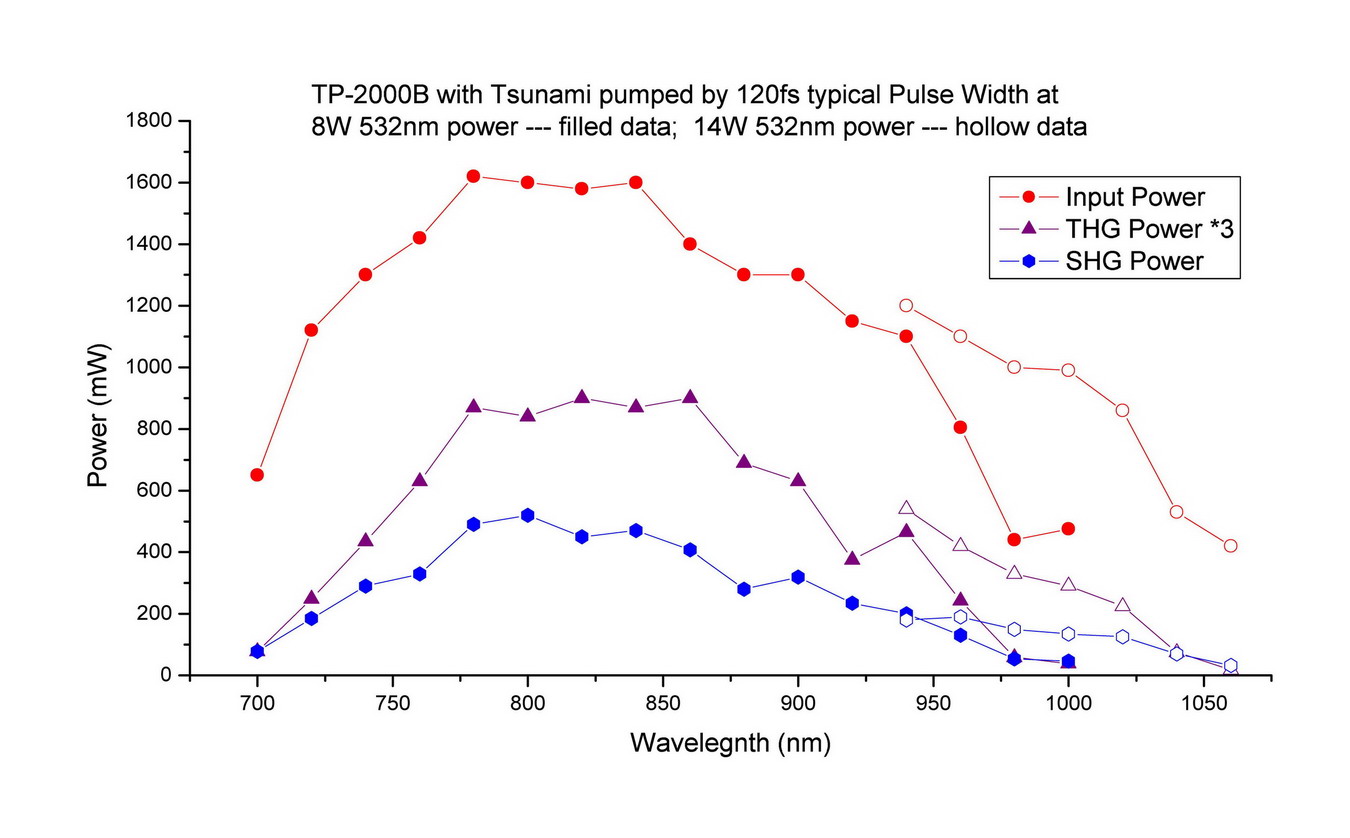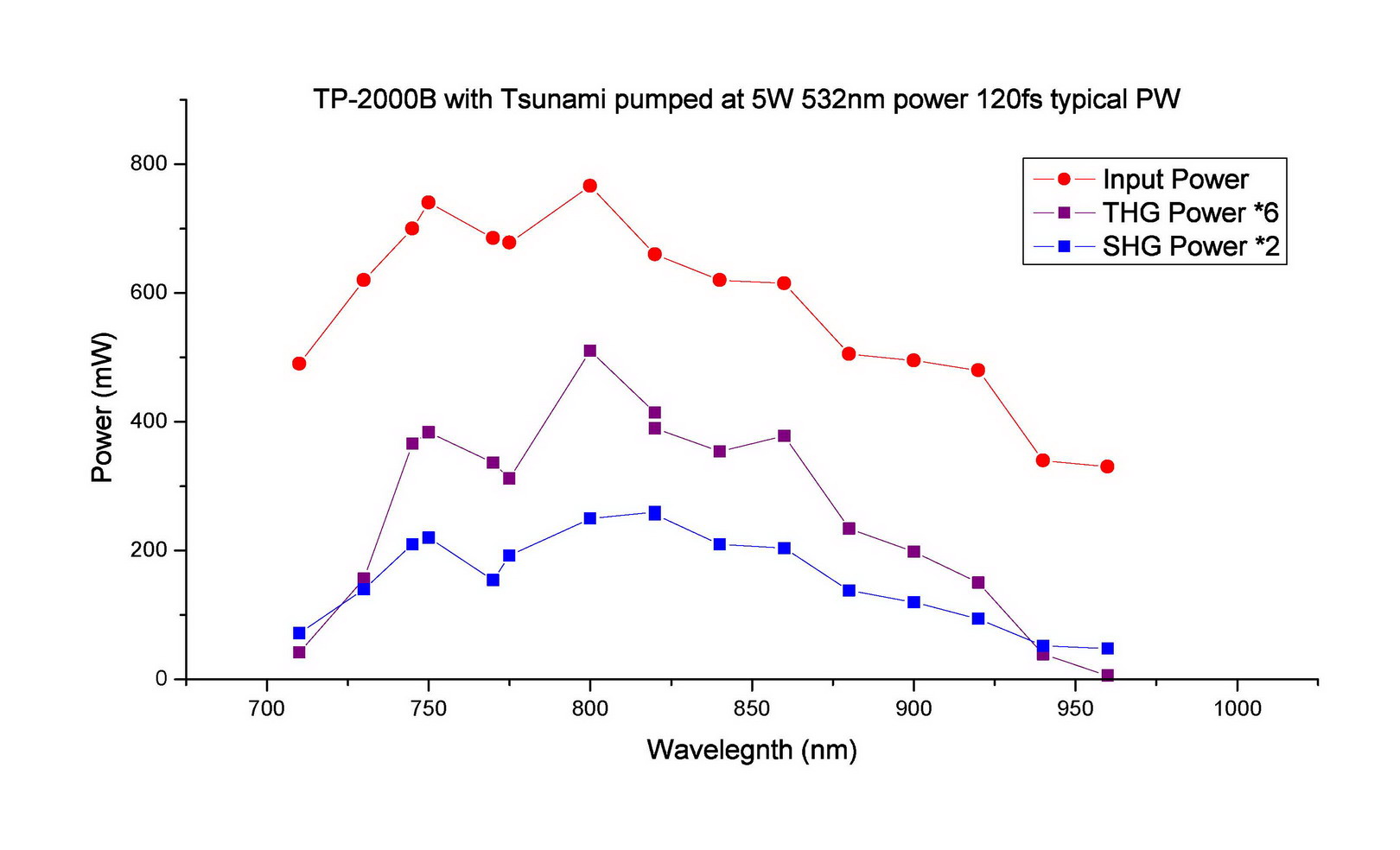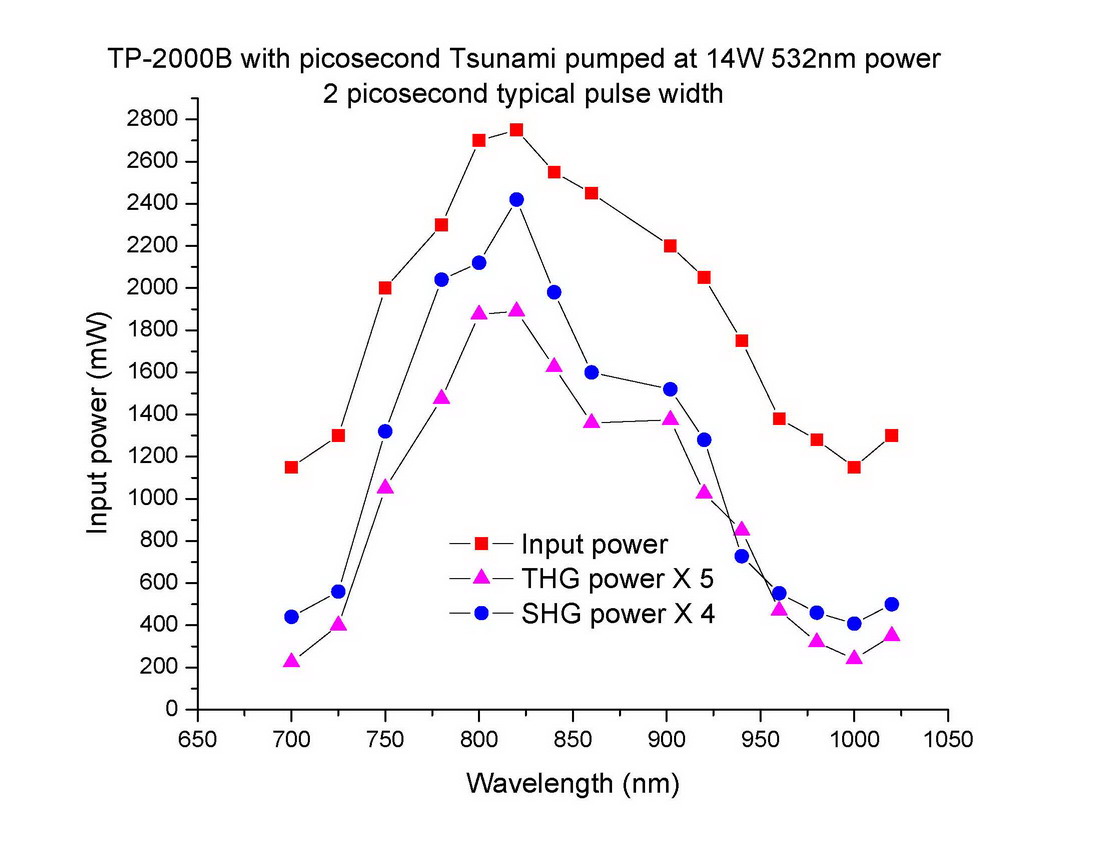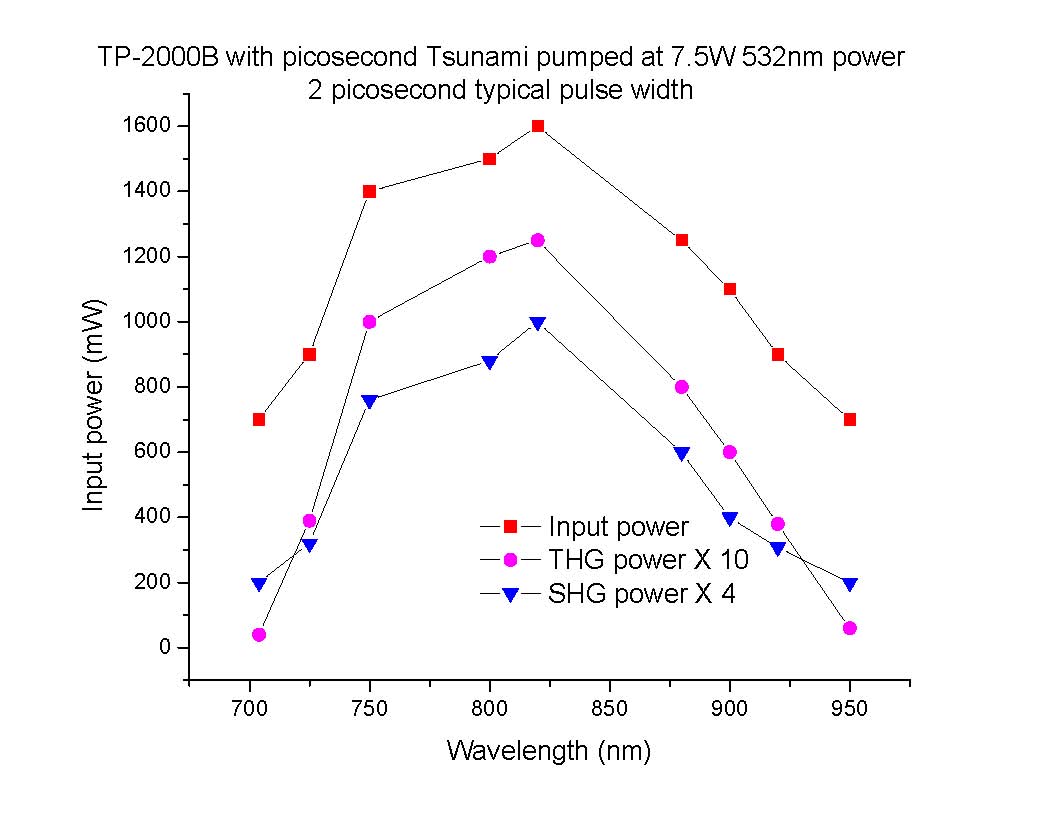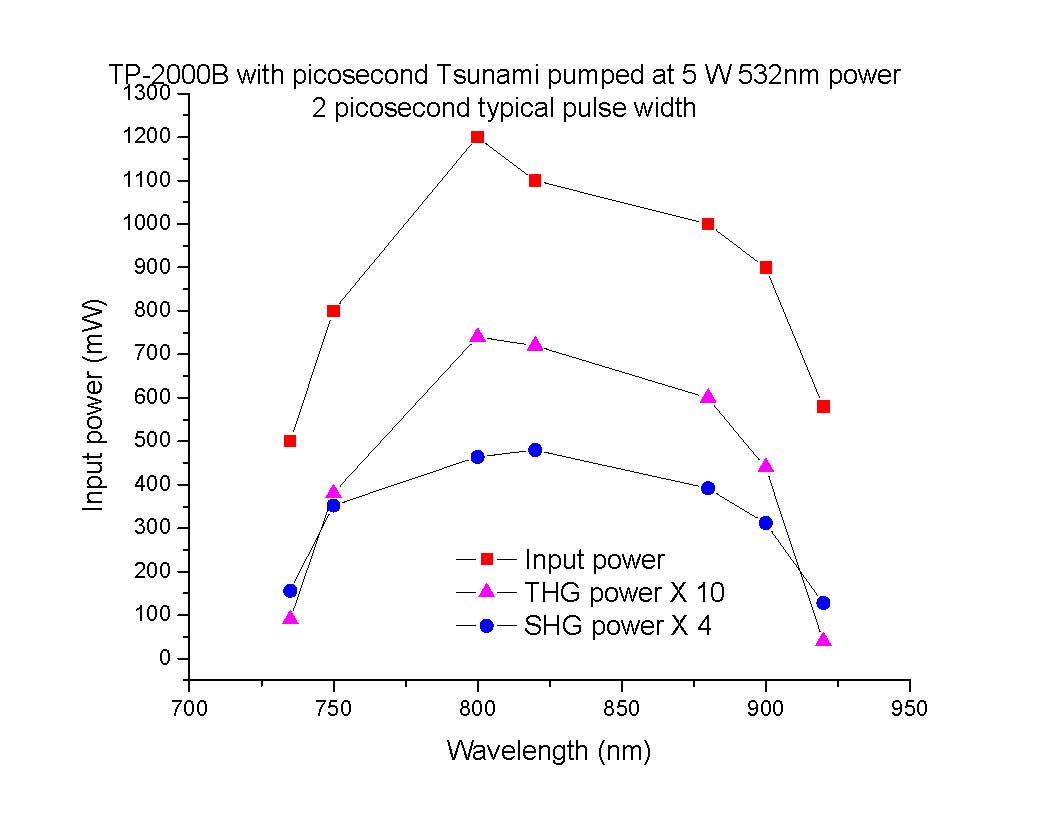TRIPLER
We now provide a complete line of ultrafast harmonic generators for Ti:S lasers. With the addition of the ultrafast fs and ps triplers and FHGs, U-Oplaz has become one power source for wavelength conversions.
The new family of high efficiency triplers consists of a complete line of fs and ps triplers for both Ti:S amplifier and Ti:S oscillator. They are manufactured by U-Oplaz Technologies Inc. based on the new invention of Time Plate™ (US patent # 5,852,620) and a new time delay device (patent pending hold by U-Oplaz Technologies, Inc.).
The new ultrafast triplers are the most compact and user friendly, while setting the record of the highest efficiency. The steps of the separation and recombination of the fundamental and SHG beams in other ultrafast triplers are no longer needed and the spatial overlap of the two beams are automatically obtained with the Time Plate™ design. The smooth time delay control adds more value to the triplers for your application. See the comparison here.
The latest TP-2000B design could triple Ti:Sapphire output from 680 nm ~1,100nm with single set of optics.
How short the tripling pulse width can be generated by U-Oplaz抯 TP triplers and what is the influence of the Timeplate to the pulse width of the fundament and SHG pulses? Check here for the answer.
Time PlateTM in the fs Tripler
So far all other fs triplers use a delay line for time compensation. The delay line consists of two beam splitters (or diachronic mirrors), several mirrors, and a translation stage. It works in three steps:
(1) the separation of two laser beams w and 2w;
(2) the two beams traveling through different path and the time delay between them being adjusted by moving the translation stage;
(3) the recombination of the two beams.
The drawbacks of delay line are that it is complicated, expensive, large size, and very difficult to align.
The Time PlateTM is invented to overcome the drawbacks of delay line. A Time Plate (TP) consists of a specially designed birefringence crystal. After the SHG stage, a time delay between the two beams w and 2w, which are polarized perpendicularly to each other, is generated. The time delay is compensated after the two beams travel through the time plate since they have different refractive indices no and neff. The delay time is tunable by rotating the angle of the time plate around the z-axis to change the effective index neff. One degree rotation changes the time delay about 10 fs for a 2 mm thick calcite crystal. In the fs triplers, there is no beam separation and recom-bination and the beams w and 2w keep collinear so the spetial overlap are automatically achieved. The better method for spatial and time overlap makes the fs triplers to be very user friendly and more reliable.
Two Tripler Models
There are two tripler models, TP-1A and
TP-2000B. The model TP-1A is perfect for Ti:S amplifier. The standard tripler is designed for 1 mJ per pulse energy of kHz Ti:S amplifier systems from Spectra-Physics, Coherent, Clark, and Quantronics. The model for much high pulse energy is also available, please consult our sales engineers. The model TP-2000B is designed for mode-locked Ti:S oscillator like Spectra-Physics Tsunami and Coherent Mira. The time plate design makes the TP-2000B tripler truly user friendly. The alignment becomes so easy that any one can do it himself.
Specifications:
| Model TP-1A |
Model TP-2000B |
| SHG pulse energy |
>250 µJ |
>250 mW |
| SHG pulse width |
<180 fsec |
<180 fsec |
| THG pulse energy |
>150 µJ |
>150 mW |
| THG pulse width |
<300 fsec |
<300 fsec |
Note: 1. Input: 1 W, 120 fs, 1 kHz at 800 nm
2. Input: 1 W, ~76MHz, 100fs at 800 nm
Comparisons:
| |
TimePlate Technology
U-Oplaz's patent products --- TP-1A for Ti:S amplifiers, TP-2000B for Ti:S oscillators
|
Traditional delay line
(Inrad Model 5-050 for Ti:S oscillators, Super Optronics/CSK 8315A for Ti:S amplifiers)
|
| Ease of Finding Mixing Signal (e.g. THG) |
Easy, because both spatial and temporal overlap are already partially satisfied, only fine tuning is required.
|
Hard, one has to adjust wildly to get both spatial and temporal overlap, then fine tuning is possible
|
| Efficiency |
Fewer optics (1 pcs of TimePlate replaces a traditional delay line of 8 pcs of mirrors), less loss, and better efficiency. See the comparison figure above (top: TimePlate, below: optical delay line). 20% (TimePlate) v.s. 15% (optical delay line) at 1W fs input.
|
Involves delay line consisting of many more optics (>6 pcs more mirrors), induces more losses. See the comparison figure above (top: TimePlate, below: optical delay line)
|
| Ease Operation and maintainance |
Insensitive to vibration, and little external adjustment.
|
Very sensitive to vibration and external adjustment
|
| Pulse broadening |
Too little to be measured, see here for details.
|
More transmissive optics involved in dichroic separation, means more broadening. No measured data to demonstrate.
|
Ordering Information
U-Oplaz offers a wide range of crystals and optics to optimize the TP triplers for your application. TP-1A works for Ti:S amplifier and
TP-2000B works for Ti:S oscillator. Both fsec and psec operations are available at 700-900 nm and/or 800-1000 nm. Please consult a U-Oplaz sales engineer with questions on configuration or system efficiencies.
For FHG generation with TP-2000B, we could get FHG covering 840nm to 920nm (210nm to 230nm) with the 2+2 FHG option added to the TP-2000B. This option include FHG crystal and UV FHG harmonic separation optics. We could also get 3+1 FHG covering 760nm to 840nm (190nm to 210nm). This 3+1 process is completed in a separate unit --- TP-2000B FHG. See figure below for typical performances.
For FHG generation with TP-1A, we also offer both 3+1 process and 2+2 process depending on customer pump wavelength. For wavelength at below 840nm, 3+1 process is used and customer should use our TP-1A FHG box. For wavelengths above 840nm, 2+2 process could be used and an add-on option with crystal and optics to TP-1A is available. Please consult our engineer for detailed configuration and pricing.
Dimensions: (All dimensions are in inches, unless otherwise specified)
| Model |
L(inch) x W(inch) x H(inch), Beam height (inch) |
|
TP-1A THG, TP-1A FHG(3+1)
|
14.25"(L)x10.26"(W)x6.00"(H), > 4.00" Beam height *1
|
|
TP-2000B THG, TP-2000B FHG (3+1)
|
12.00"(L)x6.25"(W)x5.50"(H), > 3.75" Beam height *1
|
Note: *1: Beam height is adjustable to match pump lasers from different companies, list beam height is the minimal beam height when positioned at normal directions on table.
Custom mechanical designs for specific lasers and systems, e.g., including computer control and automatic scanning are always available.
TP-1A dimensions, custom mechanical designs for specific lasers and systems are always available. For palm size TP-2000B, please refer
TP-2000B webpage.
Typical test results of TimePlate Ultra-fast tripler: Model TP-2000B
(Use view image to get high resolution pictures)
|
Wavelength (nm)
|
Input Power (mw)
|
SHG Power (mw)
|
THG Power (mw)
|
|
740
|
800
|
170
|
85
|
|
810
|
1000
|
280
|
205
|
|
890
|
900
|
245
|
127
|
|
950
|
350
|
50
|
9.5
|
Note: Tests are done with a 100fs pulse width Ti:Sapphire oscillator, operating at 80MHz repetition rate.
These test results are done with nearly perfect pump source, efficiency no only depends on Tripler design, but also depend on the beam shape and pulse width characteristics of the pump laser.
